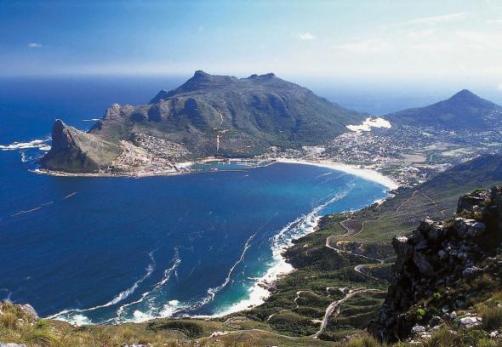Without fear sin of exaggeration, one can say that the capital of the Western Cape Province, door to European colonization in the seventeenth century, is one of the most beautiful on the planet: beaches, mountains and vineyards set its spectacular surroundings.
The country’s oldest historical vestige, the Castle of Good Hope, can be taken as a starting point to explore the metropolis. Built by the Dutch in 1666, the pentagonal fort now houses the Museum of the Army and Navy. This first colonial high is just a prologue to the magnificent architectural ensemble begins to unfold in Parliament Street. The Anglican Cathedral of St. George (headquarters of the recently retired Archbishop Desmond Tutu, Nobel Peace Prize), is the best example of British style practiced at the end of the last century. Other buildings dot the historic whiff of English and Dutch, as the Parliament, opened in 1885; the Groote Kerk, the oldest Christian Temple in the country; the garden company, located where the pioneer Jan van Riebeeck; planted a vegetable garden and in general, the Victorian houses that flank the Long Street, famous also for its specialized shops.
Walk in Cape Town
Just behind this approach can deal with a very different atmosphere: the Malay Quarter, a settlement for the descendants of Muslim slaves imported by the Dutch during the eighteenth century. Mosques and low houses of pastel facades contribute their oriental exoticism. Recently conditioning, Old Port Alfred & Victoria is at night, the busiest area of the city. Finally, it is highly recommended to reach the summit of Table Mountain, on foot or by cable car and enjoy a spectacular view. The superb botanical Kirtenbosch gardens extend on the eastern side.
Before leaving the city, it is close to South African Museum (Queen Victoria, 25), a comprehensive archaeological and ethnological survey of black culture. It is perhaps the most interesting exhibit in the country.
The peninsula of Cape Town
Around the city, the Atlantic coast provides some of the most spectacular landscapes in South Africa. From its bustling beaches deserve mention Bloubergstrand or the beautiful Camps Bay. To appreciate in all its dimensions the rugged beauty of this territory is highly recommended to travel by car the ten kilometers that make up the panoramic ride of the Chapman peak. Also near the capital, the Natural Reserve Cape of good hope is a real garden with 23,000 species of flowers.
Natural beauty of Cape Town
The East Coast is much more rich in tourist attractions, what begins to be checked near Cape Town, where Hermanus, known as “the Riviera of Africa”, the Natural Reserve of Hoop or already on the inside, the historic town of Swellendam. However, the most compelling claim of maritime South African is the “Garden Route”, including coastal area between Mossel Bay and Jeffrey’s Bay where forests, lagoons and dunes run alongside golden sand beaches. Of the many possibilities offered by this beautiful strip between the mountains and the sea, worth bask in Victory Bay and Wilderness beaches or try Knysa oysters. The hundred miles of coast Tsitsikama National Park are finally a good overview of the natural beauty of the route.

